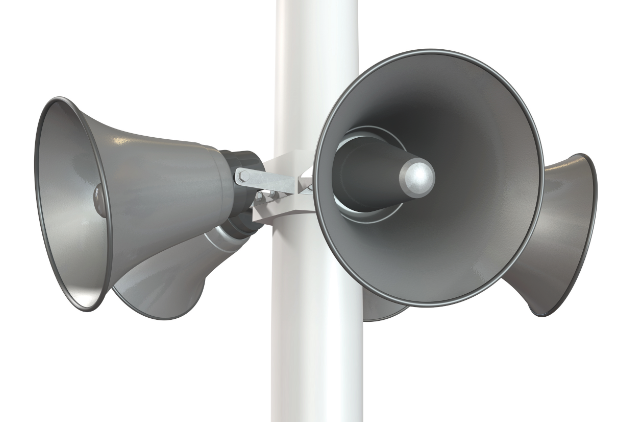
A major new survey from Installation reveals the extent of the confusion about the much-discussed fire detection and fire alarm systems standard – particularly those sections relating to voice alarm. David Davies sifts through the results with the assistance of leading audio consultant Roland Hemming
One would need to have been living in a cave – or in a very profound state of denial – to have avoided the debate surrounding EN54. But what might have remained unclear until now is the sheer extent of confusion around the fire detection/fire alarm systems standard and its legal ramifications.
In the smallest of nutshells, EN54 specifies requirements and laboratory testing for every component of these systems, and allows for the free movement of construction products between countries of the European Union market. It is, however, the Construction Products Directive and, latterly, the Construction Products Regulation (CPR) that gives the standard its legal weight. Under the terms of the CPR, the CE conformity mark became mandatory, with manufacturers and importers given until July 2013 to ensure their construction products satisfied the CE requirements of the new regulation.
So far, so clear. But what appears to be anything but transparent is quite how these changes should be implemented out there in the ‘real world’ of systems integration. In particular, the issue of where responsibility lies for various aspects of voice alarm systems appears to be clouded in confusion.
Several consultants and industry observers have highlighted their concerns to Installation over the past 12 months, but it was Roland Hemming – founder of independent audio consultancy RH Consulting, which offers advice on EN54 compliance to manufacturers, installers and venues – who suggested that we undertake a comprehensive survey into the whys and wherefores of EN54 implementation.
“In truth, it is only over the last 12 months that I have realised quite how much uncertainty there is out there about the legal implications of EN54, and in particular parts 16 [regarding components for fire alarm voice alarm systems] and 24 [voice alarms – loudspeakers],” says Hemming, who sits as UK expert audio alarms on the BSI committee and contributes to the TC72 Working Group 3, which is focused on the aforementioned parts 16 and 24.
Hemming therefore took it upon himself to unravel the legal maze around the standard, but even he may have underestimated the time that it would take. “I have had to be very pedantic to find out the answers,” he laughs. “It’s a process that has required me to talk to manufacturers, other consultants, trade associations, the [UK] Department for Communities and Local Government, the European Commission, a Brussels-based legal firm…”
If after all this effort even a globally renowned consultant who has worked on two of the largest audio projects in the world (the Millennium Dome and the 2012 Olympic Games) can admit that he still isn’t “100% sure” on every aspect, then it is clear that there is a problem – the severity of which is firmly underlined by the results of our survey. Notes Hemming, who helped formulate the questions and read the collected responses with a growing sense of alarm (no pun intended): “The sheer variety of different answers is testament enough to see that there are major problems in the world of voice alarm.”
Legal confusion
Among our survey respondents, manufacturers were by far the largest single share (43%), followed by consultants, integrator/installers and distributors. Geographically, the UK was responsible for the greatest share of responses (47%), followed by Sweden in a strong second place (29%).
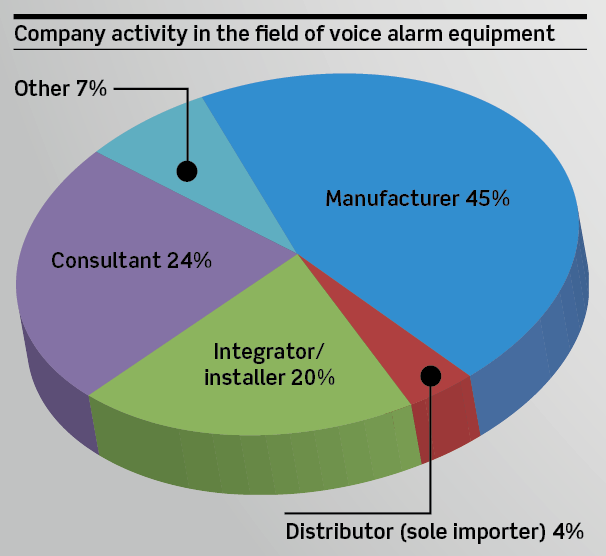
The results revealed more clarity in some areas than others when it comes to legal responsibility for individual aspects of voice alarm systems. [Results are listed at the end of this article – Ed.] Benchmarking the results against what Hemming deems to be the ‘correct’ answer in each case, we find that the largest single share of votes were cast in favour of the ‘right’ answers of local authorities/councils (compliance with building regulations) and venue owners/operators (building safety).
On the other hand, only a minority of respondents selected the right answer to a question about legal responsibility for EN54-16-compliant systems – the answer to this being manufacturers. Given the strong representation of manufacturers in the survey, then, it is rather concerning to discover that only a quarter of votes were cast correctly; instead, installers received the largest single share of answers (28%).
The issue of obligation for adherence to the voice alarm code of practice also attracted a multiplicity of responses. According to Hemming, the responsibility resides with three groups: consultants, installers and venue owners/operators. Excluding several respondents who gave no answer, the vast majority of respondents selected at least one of the responsible groups – but not one selected the correct trio in full.
Analysing a geographical comparison involving the countries that provided the two largest share of responses (the UK and Sweden) we discover that both countries gave a roughly equal number of correct answers – but to different questions. So while Swedes had a firmer idea of where responsibility falls for compliance with building regulations, verification of the voice alarm and legal responsibility for EN54-16 compliant systems, UK respondents were clearer on the obligation for building safety, performance of EN54-16/24 compliant product and design of the voice alarm.
Exemptions and ambiguity
The issue of exemptions is vital to an understanding of EN54, CPR and their drawbacks. Under the terms of Article 5, a manufacturer may refrain from drawing up a declaration of performance when placing a construction product covered by a harmonised standard on the market where “the construction product is individually manufactured or custom-made in a non-series process in response to a specific order, and installed in a single identified construction work…”
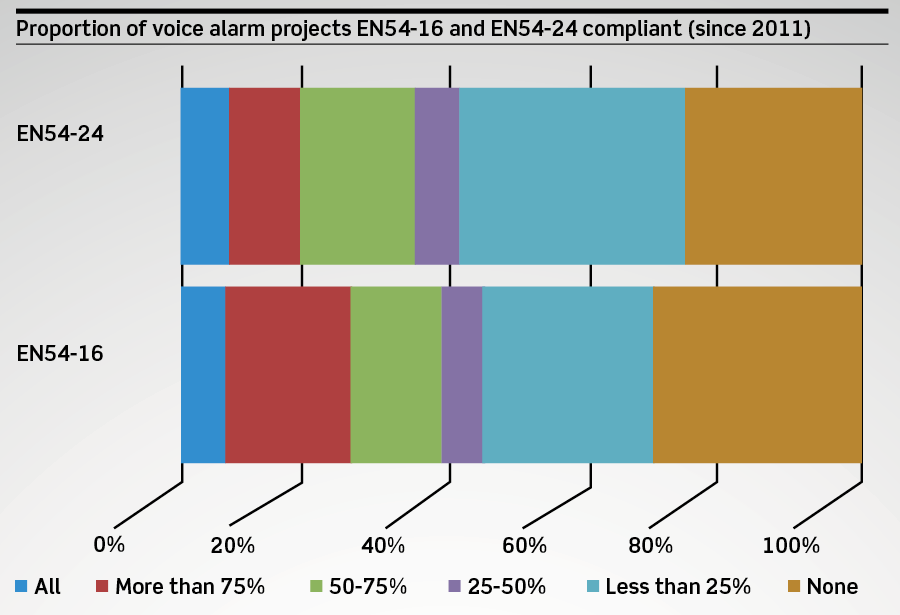
As Hemming observes, this is an exemption that, could theoretically be applied to any number of projects, although that was not the intention behind it. A relatively small proportion of voice alarm projects undertaken by our respondents since 2011 have been EN54-16/24 compliant, but it is unlikely that all the others invoked Article 5.
For example, the largest single share of participants (33%) stated that less than 25% of their projects had satisfied this part of the standard. Meanwhile, nearly half the respondents stated that they had been involved with no compliant projects since 2011, but elsewhere the responses were, frankly, all over the place – ranging from four to 400.
Hemming identifies multiple basic issues concerning EN54-16 that have given rise to “over-interpretation… although you could argue that it could have been better written in the first place. For example, [this section of the standard] does not actually say you have to have an amplifier; it implies it, but does not specifically say it. And that, of course, could open up other products to be tested that do not incorporate amplifiers.”
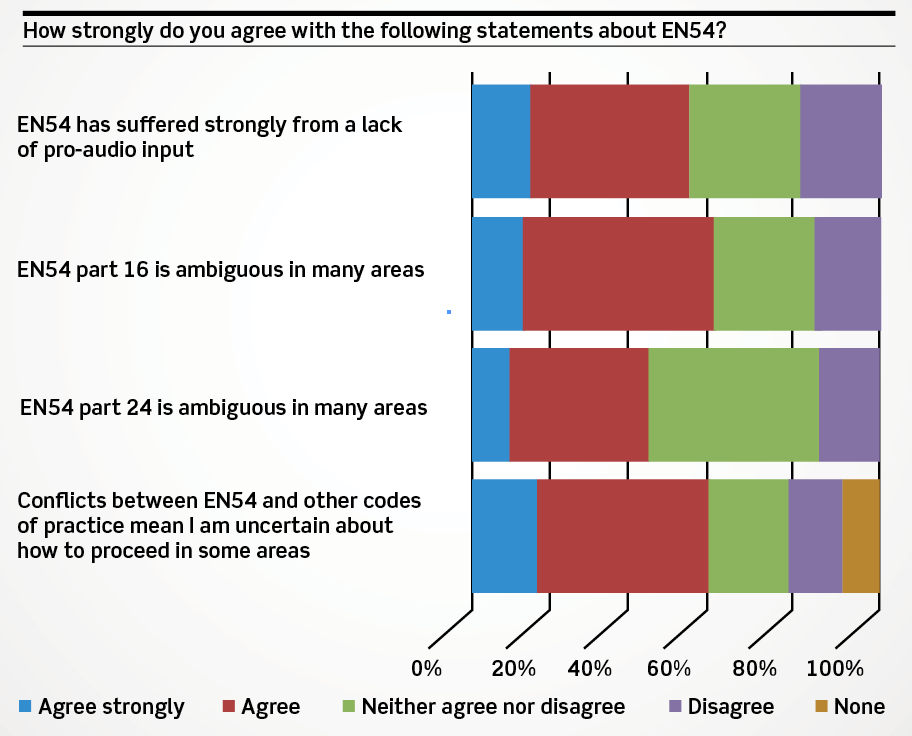
No wonder, then, that 61% (the largest single share) of respondents agreed with the statement that EN54-16 is ambiguous in many areas. There was a little more clarity among respondents over EN54-24, with 46% agreeing that it is ambiguous, while 55% of participants agreed that EN54 had suffered from a lack of pro-audio expertise in the committee that drew it up. Moreover, there was a suspicion that the ambiguity may well be open-ended; to wit, 56% of respondents said that because EN54 conflicts with some codes of practice, they were unclear how to proceed in certain areas.
“Education is needed so all concerned understand the difference between product standards and system standards,” remarked one participant – and few would argue with that. There was also general agreement with the expressed view that EN54 is working “pretty well” in retail, corporate and smaller venues, but that for larger facilities it is simply not fit for purpose. In venues like arenas, noted one respondent, “an addition will be needed so that the installer and consultants can come to agreement [more easily].”
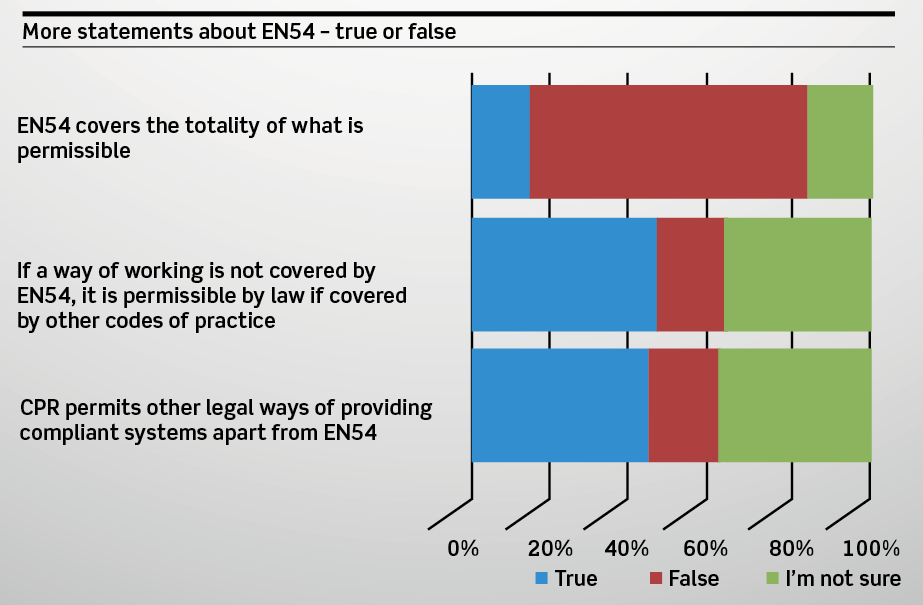
Given the above results and the obvious confusion over implementation and responsibility, it is to be expected that the vast majority of respondents (71%) rejected the notion that the EN54 standard covers the totality of what is permissible. Underlining the sense that the whole area is now a legal minefield, half of respondents also felt that if a way of working is not covered by the EN54 standard, it is permissible by law if it is allowed under other codes of practice. Close to half (46%) of respondents also believed that the Construction Products Regulation permits other legal ways of providing compliant systems other than via the EN54 route.
The final indictment of the current regulatory set-up came with a question about participants’ confidence that, should there be a fire in a building with a voice alarm system that their company has designed, supplier or installed, and as a result there was some loss of live, they or their company would not be found at least partly culpable. In total, more than 70% said they were either entirely or fairly confident that they would not be found responsible.
“What was amusing is in the instances where respondents said that they were 100% confident in the case of their system going to court, they all made errors in knowing who is legally responsible for each element of the voice alarm process,” says Hemming, adding: “Let’s hope they have some good lawyers!”
To the obvious concerns raised by our survey, Hemming also adds a few observations that could only be made after the kind of extensive research that he has lately undertaken. “There are issues about the validity of some of the test houses; some may not be valid and there are inconsistencies as to how the tests are performed,” he says. “For example, I know there are cases where a system went to one house and failed, but went to another and passed. There were also occasions where stages [of the process] were being skipped.”
Unforeseen consequences
Hemming does not place the blame at the door of any one particular group, and believes the standard has had consequences that no one could have easily predicted. But he does believe that having more people from a pro-audio background included in the formative stages could have prevented a lot of headaches: “There were people involved who knew little about voice alarm per se, let alone professional audio. It was so far away from what they knew that it was a big challenge for them to understand [the ramifications].”
Surveying the extremely mixed results of our survey, Hemming is hopeful that at least they will open up the debate about EN54 to a wider audience. “My biggest concern is that some people think that by having an EN54 certificate they are legally protected.” The industry needs some definitive guidance, and that is what a number of us are now seeking to achieve.
Responsibility for voice alarm aspects
Who has final responsibility for…
Compliance with building regulations?
Most popular answer: Local authority/council (32%)
Is this correct? Yes
Building safety?
Most popular answer:
Venue owner/operator (54%)
Is this correct? Yes
Verification of the voice alarm?
Most popular answer: Consultant/system designer + installer (23% each)
Is this correct? Yes
EN54-16 compliant system?
Most popular answer: Installer (28%)
Is this correct? No – it’s the manufacturer
Performance of EN54-16/24 compliant product?
Manufacturer (41%)
Is this correct? Yes
Design of voice alarm?
Most popular answer: Consultant/system designer (59%)
Is this correct? Yes (installer in case of design and build)
Adherence to voice alarm code of practice?
Most popular answer: Consultant/system designer + installer (24%)
Is this correct? Almost – it’s consultant, installer and venue owner/operator







